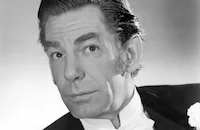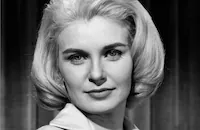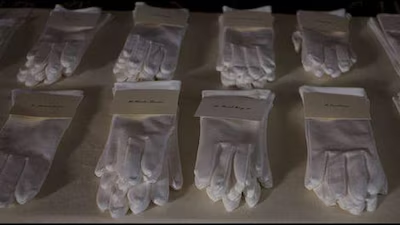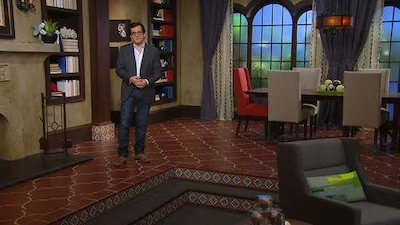The Age Of Innocence

Brief Synopsis
Cast & Crew
Martin Scorsese
Daniel Day-lewis
Michelle Pfeiffer
Winona Ryder
Miriam Margoyles
Robert Sean Leonard
Film Details
Technical Specs
Synopsis
Set amid the stifled world of New York high society during the 1870s, an aristocratic lawyer struggles with his growing passion for his fiancee's beautiful cousin, an expatriate countess who has abandoned her marriage.
Director

Martin Scorsese
Cast

Daniel Day-lewis

Michelle Pfeiffer

Winona Ryder
Miriam Margoyles

Robert Sean Leonard
June Squibb
Richard E. Grant
Terry Cook

Martin Scorsese
Domenica Cameron-scorsese
Christopher Nilsson

Geraldine Chaplin
Mac Orange
Patricia Dunnock
Tracey Ellis

Jonathan Pryce
Cindy Katz
Mary Beth Hurt
Jon Garrison
Catherine Scorsese
Thomas Gibson

Alexis Smith
Kevin Sanders

Norman Lloyd
Michael Rees Davis
Linda Faye Farkas
Clement Fowler
Stuart Wilson

Alec Mccowen
John F Mcloughlin

Sian Phillips

Michael Gough
Charles Scorsese
Brian Davies

Joanne Woodward
Cristina Pronzati
W B Brydon
Thomas Barbour
Carolyn Farina
Howard Erskine
Henry Fehren
Crew
Pierre Abraham
Michael Adkins
Sandrine Ageorges
Elizabeth Aldrich
Gina R. Alfano
Yasmine Amitai
Jean-pierre Avice
Letitia Baldridge
Florian Ballhaus
Michael Ballhaus
Michael Ballhaus
Elaine Bass
Saul Bass
Ludwig Van Beethoven
Joanne Belonsky
Elmer Bernstein
Emilie A Bernstein
Leonard Bernstein
Margaret Bodde
Christine Bodelot
Len Brooks
Suki Buchman
Joseph Burns
Joanny Carpentier
Phillip V Caruso
Kathryn M Chapin
Laura Civiello
Jay Cocks
Alesandra M Cuomo
Steven Danenberg
Alan Dangerio
Daniel R Davis
Barbara De Fina
David Dunlap
Syd Dutton
Rick Ellis
Fleet Emerson
Enya
Enya
Sylvia Fay
Dante Ferretti
Chris Fielder
Susan Fiore
Brian Fitzsimons
Tom Fleischman
Robert J Franco
Charlie Freess
Dennis Gamiello
Eugene Gearty
Mark Ginsberg
Michele Giordano
Charles Gounod
Vincent Guarriello
Amy Henkels
Julie Herrin
Patricia Doherty Hess
Patricia Doherty Hess
Joel R Hirsch
Richard Holston
Speed Hopkins
Jean-michel Hugon
Michael Hyde
Joseph Iberti
Katherine A Kennedy
Frank Kern
Cheryl Kilbourne-kimpton
Michael Kriston
Louise Lamanna
Vincent Lascoumes
Lynn Ledgewood
Alisa Lepselter
Hal Levinsohn
Ellen Lewis
Skip Lievsay
Marissa Littlefield
Lily Lodge
John B Lowry
Amy Lynn
Julie A Madison
Mike Maggi
Tod A Maitland
Tamara Malkin-stuart
Bobby Mancuso
Jim Manzione
Amy Marshall
James Mazzola
Jeff Mazzola
Larry Mcconkey
David Mcfadden
Felix Mendelssohn
Sylvia Menno
Anastas Michos
Tim Monich
David Montgomery
Michael Nickodem
Heather Norton
T. J. O'mara
John Ottesen
Ron Ottesen
Peter Owen
Alina Panova
Suzana Peric
Gabriella Pescucci
Ron Petagna
George Potts
Robert Preziola
Bruce Pross
Bruce S Pustin
Bruce S Pustin
Ray Quinlan
Nic Ratner
Joseph Reidy
Joseph Reidy
Manlio Rocchetti
Deborah Rudy
Nicky Ryan
Roma Ryan
Mark Sawicki
Wendy Sax
Thelma Schoonmaker
Martin Scorsese
John De Simone
Antonio Soddu
James Sorice
Ronnie Specter
Carl J Sprague
Robin Standefer
Philip Stockton
Johann Strauss
Johann Strauss I
Michael Stricks
Robert Stromberg
Catherine Sudolcan
Chris Sullivan
John Sullivan
Bill Taylor
Hartsell Taylor
Mary Rae Thewlis
Sara A Thorson
Melissa Unger
Matilde P Valera
David H Venghaus
Steve Visscher
Mark Von Holstein
Dave Weinman
Allen Weisinger
Edith Wharton
David S Williams
Deirdre N. Williams
Michael X Zelenak
Videos
Movie Clip




Trailer
Hosted Intro




Film Details
Technical Specs
Award Wins
Best Costume Design
Award Nominations
Best Adapted Screenplay
Best Art Direction
Best Original Score
Best Supporting Actress
Articles
The Age of Innocence (1993)
British actor Daniel Day-Lewis stars in The Age of Innocence (1993) as Newland Archer, a well-connected, socially correct lawyer, beginning to question the rigid code of behavior that governs the upper-class society in which he lives - even as he makes plans to further guarantee his place within its conservative ranks. By marrying the equally refined but unimaginative, vapid May Welland (Winona Ryder), Newland will be assuring his safe, dull position within this emotionally constrictive world.
Newland is jolted out of his complacency and a predictable future, however, by the arrival in New York of May's cousin, the mysterious, controversial but exquisitely beautiful Countess Ellen Olenska (Michelle Pfeiffer), who has fled Europe and a disastrous, unhappy marriage to a philandering Polish aristocrat. In Ellen, whose sordid, dissolving marriage places her on the periphery of polite society, Newland also sees a woman who marches to her own unique tune. With her Continental sophistication and intelligence, Newland glimpses the chance for an escape from repressive, deadening propriety and a hope of true love. That dramatic choice, between two entirely different life courses, between conformity or rebellion provides the pulse-quickening tension and eroticism in Scorsese's beautifully realized treatment of suffocating social codes and how they deform Newland's chance for real happiness.
Some critics were quick to look beyond the opulent opera and dining room settings of The Age of Innocence and find a common ground between the closed society of 1870s New York and the separate worlds of criminals found in other Scorsese ventures. A shared, rigid, unbreakable code of honor and loyalty exists amongst these aristocrats and Scorsese's more familiar duty-bound mobsters.
Though nominated for five Academy Awards, the film's almost reverential treatment of the plush, perfect order of Wharton's sumptuously appointed wealthy upper class, from its elaborate table settings to its exquisite ball gowns, struck many as strained and artificial, and evidence of Scorsese's uncharacteristic awe of this posh aristocratic milieu. Others noted Scorsese's inability to fully convey Wharton's observant authorial "voice" and her satirical skewering of the same social class she also revered. Wharton's vantage is delivered throughout the film by voice-over narration taken directly from Wharton's book, spoken by Joanne Woodward. In an unusual attempt to stick to the rhythms of Wharton's prose, Scorsese actually fit scenes around Woodward's narration, so that shots were planned after the fact, to fit the rhythm and context of the narration.
Others were rightly amazed at Scorsese's ability to render so much of the tone and look of Wharton's world, as well as the heartfelt manner in which the director treated this painful story of unconsummated love. Laden with complex levels of repression, The Age of Innocence reveals depths of characters and knowledge previously hidden, most startlingly in the supposedly passive May, who reveals a stronger will than Newland ever imagined. Ryder won an Academy Award nomination for her nuanced performance as the lovely but inert May. The Age of Innocence also boasted strong performances from key and peripheral characters as well. Michelle Pfeiffer's subtle expressions of fear and sadness are especially moving, making the frustrated passion between Newland - yearning for one woman while promised to another - sizzle with a genuine erotic charge noted by several critics.
Critics like New York magazine's David Denby were especially impressed by how convincingly the principal actors conveyed emotion in a society that refused to acknowledge passion or intense feeling of any kind. Said Denby of Day-Lewis's pained, moving performance, "Newland is in a state of despair that his training as a gentleman gives him no way of expressing." The secondary performances in The Age of Innocence are equally noteworthy, especially Miriam Margolyes as the obese, sedentary society matron Mrs. Mingott, who holds court in her lush Manhattan mansion and holds the fates and fortunes of many of New York's upper class in her hands.
Approaching the elaborate codes of behavior of Wharton's world with some trepidation, Scorsese devoted a full 18 months to research. Evoking that lost world of 19th-century society proved not mere affectation, but crucial to the director's vision for the film. As Scorsese observed of the need for historical accuracy, "If you can make the world where Newland Archer lives real, and his obligations real, then you can make his passions real." But Scorsese's script (co-written by New York Times critic Jay Cocks) and astute direction managed to convey the painful gravity to people who give up everything they desire for propriety's sake, and wind up empty and unfulfilled for their fear. The Age of Innocence, which had been adapted twice before by Hollywood (in 1924 and 1934), continued a recurring theme in Scorsese's films, of individuals gravely rebelling against social constraints. Though it was said to take the notoriously non-bookish Scorsese seven years to read The Age of Innocence, it proved intoxicating to the director as a way to treat the theme of unconsummated love in a modern age when the very concept was anachronistic.
While some similarity could be found between the rigid codes of the New York aristocracy in Wharton's time and the criminal demimonde of Scorsese's film universe, the novelist herself bore some resemblance to the iconoclastic, maverick Scorsese, who was part of an elite coterie of directors including Francis Ford Coppola, Brian De Palma, Paul Schrader, Steven Spielberg and George Lucas -- who redefined cinema in the seventies. A complicated woman and rebel of some degree herself, Wharton was almost 60 when she wrote The Age of Innocence, considered her best work. And though she came from the world she wrote about, Wharton was also an outsider who managed to thrive outside its rigid codes. Divorced from a passionless husband, Wharton took a lover in middle age and fled - like Countess Olenska - to the relative freedom of Europe, where she dabbled in writing pornography and was a friend to writers Sinclair Lewis and Aldous Huxley.
Producer: Barbara De Fina
Director: Martin Scorsese
Screenwriter: Jay Cocks and Martin Scorsese, from the novel by Edith Wharton
Director of Photography: Michael Ballhaus
Production Design: Dante Ferretti, Robert J. Franco
Music: Elmer Bernstein
Principal Cast: Daniel Day-Lewis (Newland Archer), Michelle Pfeiffer (Countess Ellen Olenska), Winona Ryder (May Welland), Alexis Smith (Louisa Van Der Luyden), Geraldine Chaplin (Mrs. Welland), Mary Beth Hurt (Regina Beaufort), Alec McCowen (Sillerton Jackson), Richard E. Grant (Larry Lefferts), Miriam Margolyes (Mrs. Mingott).
C-139m. Letterboxed. Closed captioning.

The Age of Innocence (1993)
The Age of Innocence -
The film begins with the camera hurriedly chasing glimpses around the opera as we are introduced to the characters via both narrator (Joanne Woodward) and character gossip. There is the aforementioned Newland Archer and Countess Elllen Olenska, but there is also May Welland, Ellen's cousin and the fiancée of Newland. They are seated together at the opera as Newland journeys over to greet them in their box seats. The conversation is banal but New York society has already taken notice. The Countess, a New Yorker by birth, has returned from Poland having separated from her husband, a Count. She intends to get a divorce and the well-established socialites find all of it just a bit distasteful. Newland, however, is kind and gracious with her and the two quickly develop unspoken feelings for one another. When the Countess becomes determined to get a divorce, the law firm that employs Newland, sends him to dissuade her. Their passion only grows deeper but Newland cannot break with society and leave May.
Scorsese's first stab at a lavish costume drama was not entirely successful. Audiences didn't flock to it as they had his previous movies but the movie generally received positive reviews. Now, however, decades after its release, it looks to be one of Scorsese's best films. A story like this requires the push and pull of both expressionism and restraint. Scorsese does not abandon his cinematic style but, rather, adapts it. The camera still moves fluidly but it swirls around characters and situations locked in place, paralyzed by fear and social standing. The narration is formal but revealing. The character's feelings and emotions are nuanced but seething. And the acting through all of it is superb.
Scorsese had his actors listen to tapes of people speaking from the period, recorded nearly a century before, to get a feel for how dialogue was expressed and where inflections were made. Daniel Day-Lewis does such a good job of mimicking the cadences of the day that it feels like another actor than the one we know from so many expressive performances. And Michelle Pfeiffer is simply heartbreaking as the Countess, a woman who could not understand why the world was so decidedly against her freedom. And Winona Ryder, especially to anyone who has read the book, is simply perfect as May. She embodies both the physicality and psychology of May to such an expert degree that it feels like the May of the novel has leapt off the page and onto the screen.
Of course, there are so many other notable performances in the film that it's hard to keep up. From Joanna Woodward's expert narration to Michael Gough's Henry van der Luyden and Richard E. Grant's Larry Lefferts, the performances keep the movie rooted in a time and place that feels exactly right. Above all, there is Miriam Margolyes as Mrs. Mingott. Her performance as the grandmother of May, and the unofficial arbiter of New York society, is possibly the best in the film.
The settings were largely real locations in New York and Pennsylvania, instead of studio built sets. Sites included the Luykas Van Alen House in Kinderhook, NY, the Paine Mansion in Troy, NY, and the Philadelphia Academy of Music in Philadelphia, PA. This gave the film a feel of authenticity for which sets might not have allowed.
The screenplay was written by Martin Scorsese and Jay Cocks, an American film critic that Scorsese had started working with years before on an adaptation of Gangs of New York. That production, also taking place in historic New York, would not be made until 2002, even though Scorsese and Cocks began work on it in 1976. Age of Innocence would be the first one to see release and the movie that served as a stepping stone to the second. Although it did not receive a nomination for Best Picture, it did win the Oscar for Costume Design, and Winona Ryder was nominated in the supporting category. Other nominations included the screenplay, score and art direction. Age of Innocence remains one of Martin Scorsese's most beautiful and enduring works.
Director: Martin Scorsese Screenplay: Martin Scorsese, Jay Cocks Producers: Barbara De Fina, Bruce S. Pustin, Joseph P. Reidy Music: Elmer Bernstein Cinematography: Michael Ballhaus Film Editing: Thelma Schoonmaker Production Design: Dante Ferretti Art Direction: Speed Hopkins Set Decoration: Robert J. Franco , Amy Marshall Costume Design: Gabriella Pescucci Cast: Daniel Day-Lewis (Newland Archer), Michelle Pfeiffer (Ellen Olenska), Winona Ryder (May Welland), Richard E. Grant (Larry Lefferts), Alec McCowen (Sillerton Jackson), Geraldine Chaplin (Mrs. Welland), Mary Beth Hurt (Regina Beaufort), Stuart Wilson (Julius Beaufort), Miriam Margolyes (Mrs. Mingott)
By Greg Ferrara
The Age of Innocence -
Elmer Bernstein (1922-2004)
Elmer Bernstein, who was not related to Leonard Bernstein, was born on August 4, 1922, in New York City. He displayed a talent in music at a very young age, and was given a scholarship to study piano at Juilliard when he was only 12. He entered New York University in 1939, where he majored in music education. After graduating in 1942, he joined the Army Air Corps, where he remained throughout World War II, mostly working on scores for propaganda films. It was around this time he became interested in film scoring when he went to see William Dieterle's The Devil and Daniel Webster (1941), a film whose score was composed by Bernard Herrmann, a man Bernstein idolized as the ideal film composer.
Bernstein, who originally intended to be a concert pianist and gave several performances in New York after being discharged from military service, decided to relocate to Hollywood in 1950. He did his first score for the football film Saturday's Hero (1950), and then proved his worth with his trenchant, moody music for the Joan Crawford vehicle Sudden Fear (1952). Rumors of his "communist" leanings came to surface at this time, and, feeling the effects of the blacklist, he found himself scoring such cheesy fare as Robot Monster; Cat Women of the Moon (both 1953); and Miss Robin Caruso (1954).
Despite his politics, Otto Preminger hired him to do the music for The Man With the Golden Arm, (1955) in which Frank Sinatra played a heroin-addicted jazz musician. Fittingly, Bernstein used some memorable jazz motifs for the film and his fine scoring put him back on the map. It prompted the attention of Cecil B. De Mille, who had Bernstein replace the ailing Victor Young on The Ten Commandments (1956). His thundering, heavily orchestrated score perfectly suite the bombastic epic, and he promptly earned his first Oscar® nod for music.
After The Ten Commandments (1956), Bernstein continued to distinguish himself in a row of fine films: The Rainmaker (1956), Sweet Smell of Success (1957), Some Came Running (1958), The Magnificent Seven (a most memorable galloping march, 1960); To Kill a Mockingbird (unique in its use of single piano notes and haunting use of a flute, 1962); Hud (1963); earned a deserved Academy Award for the delightful, "flapper" music for the Julie Andrews period comedy Thoroughly Modern Mille (1967), and True Grit (1969).
His career faltered by the '80s though, as he did some routine Bill Murray comedies: Meatballs (1980) and Stripes (1981). But then director John Landis had Bernstein write the sumptuous score for his comedy Trading Places (1983), and Bernstein soon found himself back in the game. He then graced the silver screen for a few more years composing some terrific pieces for such popular commercial hits as My Left Foot (1989), A River Runs Through It (1992) and The Age of Innocence (1993). Far From Heaven, his final feature film score, received an Oscar® nomination for Best Score in 2002. He is survived by his wife, Eve; sons Peter and Gregory; daughters Emilie and Elizabeth; and five grandchildren.
by Michael T. Toole
Elmer Bernstein (1922-2004)
Quotes
Trivia
Miscellaneous Notes
Limited Release in United States September 17, 1993
Released in United States Fall September 17, 1993
Wide Release in United States October 1, 1993
Expanded Release in United States October 8, 1993
Released in United States on Video April 6, 1994
Released in United States 1993
Released in United States September 13, 1993
Released in United States 2013
Shown at Venice Film Festival (out of competition) August 31 - September 11, 1993.
Edith Wharton's novel has been adapted at least twice before: in 1924 by director Wesley Ruggles; and in 1934 by director Philip Moeller, starring Irene Dunne.
Project was at 20th Century Fox before it was put into turnaround and picked up by Columbia.
Martin Scorsese was named best director of the year by the National Board of Review (1993). Winona Ryder was also cited as best supporting actress.
Completed shooting June 26, 1992.
Began shooting March 24, 1992.
Platform release in USA September 24, 1993.
Limited Release in United States September 17, 1993
Released in United States Fall September 17, 1993
Wide Release in United States October 1, 1993
Expanded Release in United States October 8, 1993
Released in United States on Video April 6, 1994
Released in United States 1993 (Shown at Venice Film Festival (out of competition) August 31 - September 11, 1993.)
Released in United States September 13, 1993 (Shown September 13, 1993 in New York City to benefit New York Historical Society.)
Released in United States 2013 (Revivals)
Martin Scorsese was nominated for outstanding directorial achievement by the Directors Guild of America. Scorsese was previously nominated for "Taxi Driver" (USA/1976), "Raging Bull" (USA/1980) and "GoodFellas" (USA/1990).














